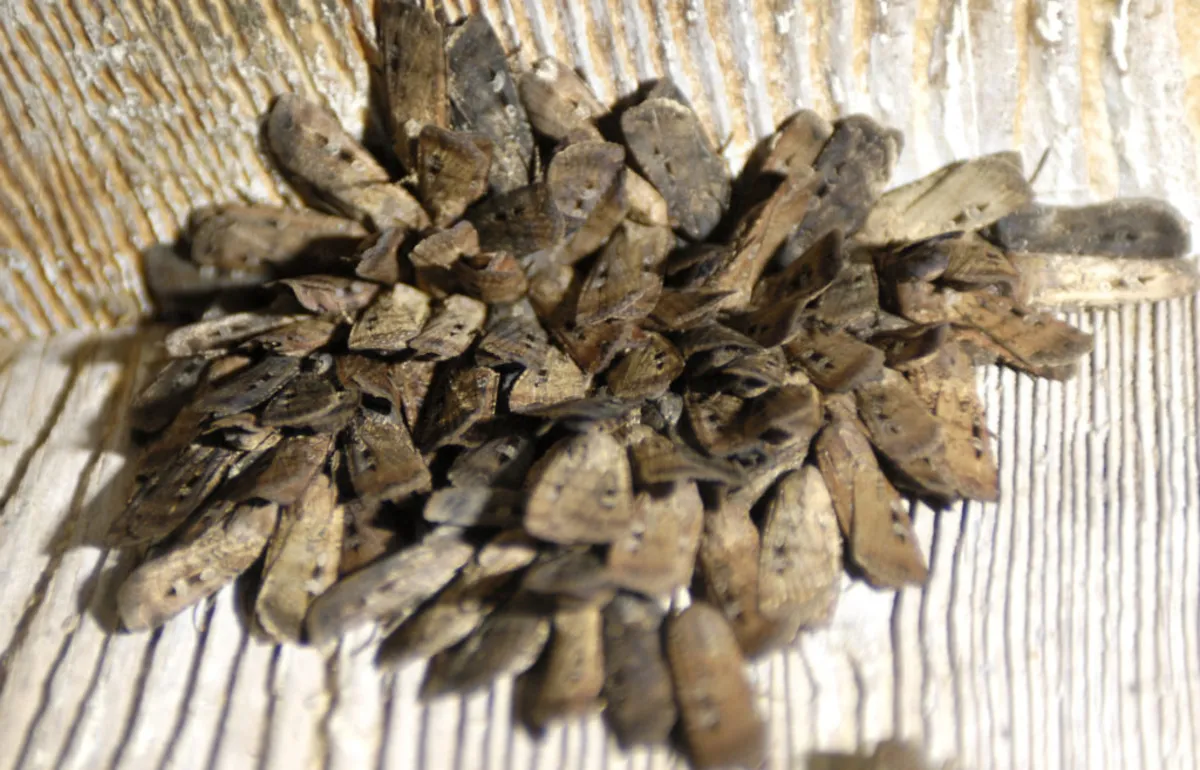
A recent study has unveiled that the Bogong moths, native to Australia, possess an extraordinary ability to navigate their annual migration by using the stars as a guiding compass. This fascinating discovery highlights the remarkable navigational skills of these nocturnal insects, which travel approximately 620 miles (1,000 kilometers) to seek cooler environments in caves located near the Australian Alps during warmer temperatures. After this migratory journey, the moths return to their original habitat to breed and ultimately die.
Scientists have long been intrigued by how the Bogong moths manage to travel to locations they have never visited before. Previous research suggested that Earth’s magnetic field might play a role in guiding them, potentially in conjunction with visual landmarks. However, with the stars appearing in consistent patterns night after night, researchers began to speculate that these celestial bodies could serve as navigational aids for the moths.
To test this hypothesis, scientists placed Bogong moths in a flight simulator designed to mimic the night sky while simultaneously blocking out the Earth’s magnetic field. They observed the moths' flight patterns under two conditions: one where the stars were arranged in their natural order and another where the star patterns were scrambled. The results were telling; when the stars were in their proper positions, the moths flew in the correct direction. Conversely, when the star patterns were randomized, the moths became disoriented.
The findings of this groundbreaking study were published in the journal Nature, showcasing a clear demonstration of how Bogong moths utilize the night sky for navigation. Kenneth Lohmann, an expert in animal navigation from the University of North Carolina at Chapel Hill, expressed his admiration for the research, stating, “It was a very clean, impressive demonstration that the moths really are using a view of the night sky to guide their movements.”
While the study confirmed that the Bogong moths rely on the night sky for navigation, researchers are still uncertain about which specific features of the sky assist them in their journeys. It could be a distinct stripe of light from the Milky Way, a vibrant nebula, or some other celestial marker. What remains clear is that these moths depend on the combination of the night sky and Earth’s magnetic field to complete their long-distance travels.
The ability to navigate using celestial cues is not unique to Bogong moths. Other creatures, such as birds and dung beetles, also utilize the stars to guide their movements. Birds, for example, take advantage of celestial cues while soaring through the sky, while dung beetles have been observed rolling their remains short distances while orienting themselves with the Milky Way.
This research underscores the astonishing capabilities of Bogong moths, especially considering their brains are smaller than a grain of rice. David Dreyer, a study author from Lund University in Sweden, remarked, “It’s remarkable that an animal with such a tiny brain can actually do this.” This revelation not only enhances our understanding of moth navigation but also opens avenues for further research into how various species interpret and utilize their environments.
The Associated Press Health and Science Department, supported by the Howard Hughes Medical Institute’s Science and Educational Media Group and the Robert Wood Johnson Foundation, continues to provide reliable content on significant scientific discoveries.